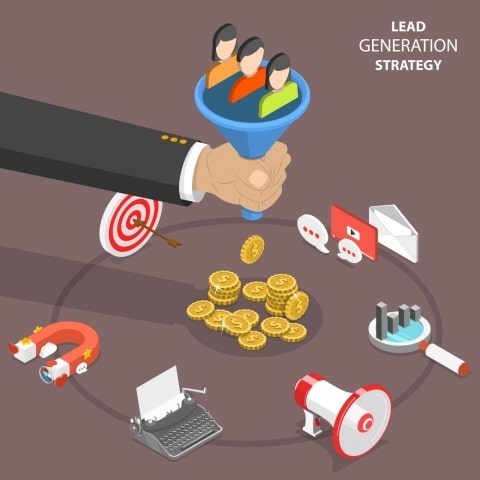Marketing and sales alignment is a key driver in a successful customer acquisition strategy.
At iFoundries, we’ve always been passionate about coagulating our marketing and sales team to perform increasingly better in driving sales campaigns. In the last few years, we found our focus inevitably shifted to be on marketing and sales alignment predominantly as it helped us generate more and better leads and grew our business to profitability.
Our clients have also benefited from our processes and best practices.
However, Rome was not built in a day. Our marketing and sales alignment model took pruning, following actionable strategies that had to be repeatedly practiced and honed.
The key to business success is creating fluidity and impeccable communication between your marketing and sales team. We all have to duly remember that the buyer has changed, and their behavior will continue to evolve at a faster rate than it ever has.
Today, the buyer is in control of the sales process and is digitally empowered and connected to make the most informed decision. Marketing and sales have to be integrated today, to know more about our customers.
Why Marketing and Sales Alignment Matters For Every Business
Marketing and Sales department do not have the best history. Most companies in Singapore have done no alignment between the two teams, causing massive profit loss and limiting the company’s revenue growth.
Misalignment significantly impacts revenue with lost sales and wasted marketing outlay costing companies $1 trillion a year. Furthermore, the lack of alignment leads to the waste of 60-70% of B2B content and a failure to convert 79% of marketing leads into sales.
Nearly half of marketing and sales professionals rate the main challenge as communication followed by broken or flawed processes (42%), use of different metrics (40%) and lack of accurate data on target accounts (39%).
-Digital Marketing Institute
Even though marketing and sales alignment is not a new concept, especially in an inbound organization, according to HubSpot’s 2018 State of Inbound Report, just 26% of respondents have a service level agreement (SLA) in place between marketing and sales.
Conversely, companies that get their marketing and sales team on the same page will generate more marketing revenue, and at the same time aid marketing and sales team to close deals better. Also, it is statistically proven that when companies align their marketing and sales strategy, high customer retention is achieved and overall productivity in business is achieved.
10 Marketing and Sales Alignment Strategies That Are SMEs’ Gateway To Success
1. Establish guidelines for your lead qualification criteria
Admit it. Marketing and Sales teams have the most discontentment establishing lead qualification criteria. Teams cannot decide what are the characteristics that help to define a lead and which buying stage they are at.
Marketing and sales will argue which leads are “hot” or “cold”, and they will have differing opinions. Hence establishing criteria is a critical factor when aligning both teams. We advise companies to create well-researched buyer personas that depict your business’ ideal target audience and prospective customers. Both Marketing and Sales will then closely follow these personas to do their individual work but yet stay in the same loop.
In lead generation there are usually two stages of qualification, marketing qualified leads (MQL), and sales qualified leads (SQL). The first one is done by a team responsible for marketing activity. The sales qualification is done to confirm the information from a sales perspective.
The number of marketing and sales qualified leads should ideally coincide. If a sales department report that many leads are not qualified or of poor quality, your marketing qualification criteria need to improve. However in the case that marketing is able to justify their qualification, sales should explain properly why they reject the prospect in a closed feedback loop.
Conversely, many salespeople are reluctant to disqualify prospects, they want to work on as many leads as possible. However, marketing should assist them and help them improve on the quality of their leads instead of the quantity. This will help both teams save a lot of time, which is the most precious asset in a business. Poor prospects will result in wasted time and chances on prospects that are actually genuinely interested to buy.
2. Create a service level agreement (SLA) to align expectations
One of the most critical steps to aligning your sales and marketing efforts is creating a service level agreement (SLA).SLAs are not only when a customer and service provider close a deal but also help to organise internal operations eg. marketing, and sales agreements.
One of the biggest complaints we hear from marketers about their sales team is that they do not work with the leads that are provided to them by the marketing team.
Both the sales and marketing departments use this document as a commitment to support each other, based on concrete, numerical goals. And guess what? 65% of marketers whose companies have this type of SLA see a higher return on investment from their inbound marketing efforts.
SLA agreement template:
- Criteria for when a lead transitions from marketing to sales
- The timeframe for sales to follow up with a MQL
- How often sales will follow up with a MQL
- The criteria you have set in place for determining a MQL and a SQL lead
3. High quality data
Marketing automation is the key to having aligned, high-quality data for both marketing and sales. A functional lead scoring system, CRM, and email contact database will affect how accurate marketing can target and segment prospects, and how effectively sales communicate with them, moving them along in their buyer’s journey.
Needless to say, the more accurate and comprehensive customer data a business has, and that is equally accessible by marketing and sales teams, the more effective the sales process becomes. In this age, data is king. Use it well and see every performance in your business soar.
There also needs to be metrics that define how well each department is doing. Only then can each team tweak their methods, and work on improving.
Without metrics, there is no accurate way of tracking what is done right and what has gone completely wrong. Metrics like conversion rates of prospects, tracking them from the start to the end of the sales process have to be accurate and interpret-able.
 (salesforce)
(salesforce)
4. Get your marketing team more involved in the sales process
The marketing and sales team have been known to have very intense meetings and discussions- but only within their own department and teams. A fruitful collaboration requires ongoing and consistent discussions and good communication. Weekly or monthly meetings are needed to benefit both sides of the team, appraising the effectiveness of ongoing marketing campaigns and also how to help sales close a customer with additional materials or resources marketing can provide.
5. Salespeople should understand different marketing roles
We’ve heard it all. There are so many salespeople in companies that do not have a thorough idea of what each marketing role does. Marketers are here to help sales seal the deal, warming up the prospect, and support sales in whatever they need when they approach the customer for a pitch or when building a relationship.
iFoundries follows the methodologies of inbound marketing where marketing plays a crucial role in supporting sales by creating highly relevant content to attract, engage and delight prospects at each stage of the buyer journey and push them down the marketing funnel for sales to close.
Sales should understand each marketing role in order to get the right support eg. brand marketing, content marketing, public relations, demand generation, product marketing, etc. The best salespeople will know how to leverage the skills and different marketing functions and capabilities whenever and wherever needed.
6. Ensure sales enablement resources are highly accessible
Sales enablement resources such as brochures, eBooks, presentation decks should be highly accessible to both teams. Marketing can be creating a host of great content and material but unreachable to sales easily. Resources are wasted where relevant offers and specific content can be available for certain personas that sales are reaching out to.
“Cloud-based storage systems like Google Drive and Dropbox are incredibly useful and easy-to-use platforms on which to store any business-related information. Shared filing systems also allow team leaders to send relevant and timely documents with ease, optimizing processes and creating more efficient teams.”
-Digital Marketing Institute
7. Marketers should think about products the way salespeople do
This is painfully honest but true. Most marketers do not know the products they are marketing well enough. The best salespeople are taught to understand in all ways what they were selling. If marketers knew their products as well as anyone in sales, both teams will be far more powerful when united.
Just over one-third of salespeople believe that marketing knows what they need from them, but 59% of marketers think they know what sales require from them.
8. Leverage sales enablement tools
A sales enablement strategy is the approach your business takes to provide sales with the resources they need to effectively sell. This strategy is tailored to your specific sales team’s needs so they can target your audience and close more deals. It should include an analysis of the resources, tools, content, and information you provide sales with to ensure it’s helping them convert more leads and audience members into customers.
-Hubspot
In today’s competitive world of sales, thankfully there are a ton of tools salespeople can leverage to make your sales process more effective. Sales enablement tools are a great way to bridge the gap between marketing and sales. Aside from content, there are many other types and functions of sales enablement tools that create efficiency in aligning your marketing and sales teams eg. Email templates, marketing automation, task reminders, email software, and lead scoring have all drastically improved the friction and flow between marketing and sales.
In a field where turnover is high, giving sales reps access to resources needed to effectively and efficiently close more deals can have a major impact on your company’s bottom line. The research found organizations that use sales enablement tools experience 25% less turnover than those who don’t.
9. Track your marketing efforts based on contribution to revenue
What percentage of overall company revenue can be traced back to your marketing team’s efforts? If you aren’t tracking your marketing efforts based on contribution to revenue, you aren’t tracking effectiveness. Its true that certain marketing entities are harder to translate into revenue. However, it is still important for marketers to know the effectiveness of their campaigns based on actual revenue.
Marketers need to understand the full scope of the funnel and not just be focused on lead generation aimlessly.
If marketers are too focused solely on lead generation efforts, the quantity might abound but not the quality, creating a greater rift between your marketing and sales teams.
10. Take time to set the marketing and sales alignment pace for the whole company
As mentioned above, as crucial as the alignment of these two teams are to the success of a business, it takes time to tackle the alignment. First, determine if the work both departments are doing is aligned and linked to your core business’ mission and outcomes. If they are not, you need to sit the teams down and rework the connection between the role of each function and business results, with performance metrics as a benchmark.
Let us know how we can help, drop us an enquiry today.









